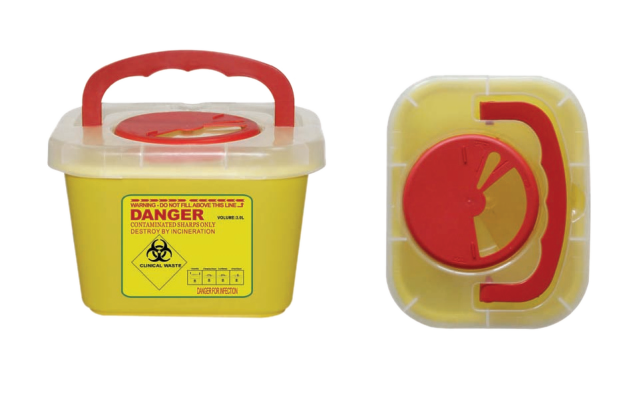Sharps Container, Medical Sharps Container, Sharps Disposable Container, Sharps container for medical use, Sharps container for home use.
Buy Nexagen Medical Sharps Container
 Sharp instruments
Sharp instruments, such as needles and syringes, are commonly used across many healthcare industries. People may also use them in their homes as part of ongoing chronic disease care for conditions like diabetes.
Proper disposal of these elements after use is essential to preserve the safety of healthcare workers, patients, Sharps Container, and the environment. Taking time to fully understand what’s involved in safe sharps waste disposal is important to ensure your organization is effectively managing this common waste stream.
What Are Sharps?
Occupational Safety and Health Administration (OSHA) standards state that a sharp is a contaminated object that can penetrate the skin. In healthcare, sharps are a form of biohazardous waste generated during the provision of care, treatment, and services. There are many kinds of sharps found in healthcare organizations, including:
- Hypodermic needles
- Syringes, such as insulin syringes for diabetic patients
- Scalpels
- Lancets
- Wires, including dental wires
How to Prevent Sharps Injuries
When a contaminated sharp
penetrates the skin, such as through a puncture or cut, there is a risk of bloodborne pathogen transmission. A bloodborne pathogen is a microorganism, such as a virus, bacteria, or fungi, which may be present in blood or other body fluids, and can lead to serious illnesses like hepatitis, AIDS, or other bloodborne diseases.
If a sharps injury is not immediately addressed, the injured person could become very sick.
The best way to limit the likelihood of bloodborne pathogen transmission is to reduce the chances of sharps injuries. Proper sharps waste disposal is a key strategy for curbing these events. By preventing sharps injuries, healthcare organizations not only safeguard workers but avoid the costs of investigation and treatment, which can cost about $3,000 per needlestick and lead to more than $1 billion in unnecessary costs for the industry.
How to Dispose of Needles and Other Sharps
Sharps should be placed in a specially designed sharps container after use. Containers that have Federal Drug Administration (FDA)-marked clearance are recommended. These receptacles are made of either hard plastic or cardboard and are designed to prevent punctures, leaks, and overfilling that objects such as needles can cause. They are also clearly labeled as biohazardous to ensure proper handling.
Healthcare organizations should place sharps waste disposal containers in areas where sharps are used, including exam rooms, laboratories, pharmacies, and nurses’ stations. They should be positioned as close as possible to the point of use and be installed at the National Institute for Occupational Safety and Health (NIOSH)-recommended height for easy employee access.
Organizations may opt to use reusable sharps containers to help meet organizational sustainability goals. Reusable containers are made of hard plastic and reduce the number of receptacles ending up in landfills.
How to Dispose of Sharps Container
Once a sharps container is full, it should be removed from the healthcare facility and transported and disposed of by a medical waste management expert. Some states allow organizations 30 days to correctly dispose of sharps waste.
Those organizations that do not generate a large volume of sharps waste may opt to use mail-back sharps containers. These are disposable sharps containers that are shipped to the healthcare facility with easy-to-follow instructions and a prepaid return-shipping box. These types of containers can also be made available to patients who wish to dispose of diabetic syringes or other sharps used for medication self-administration at home.
